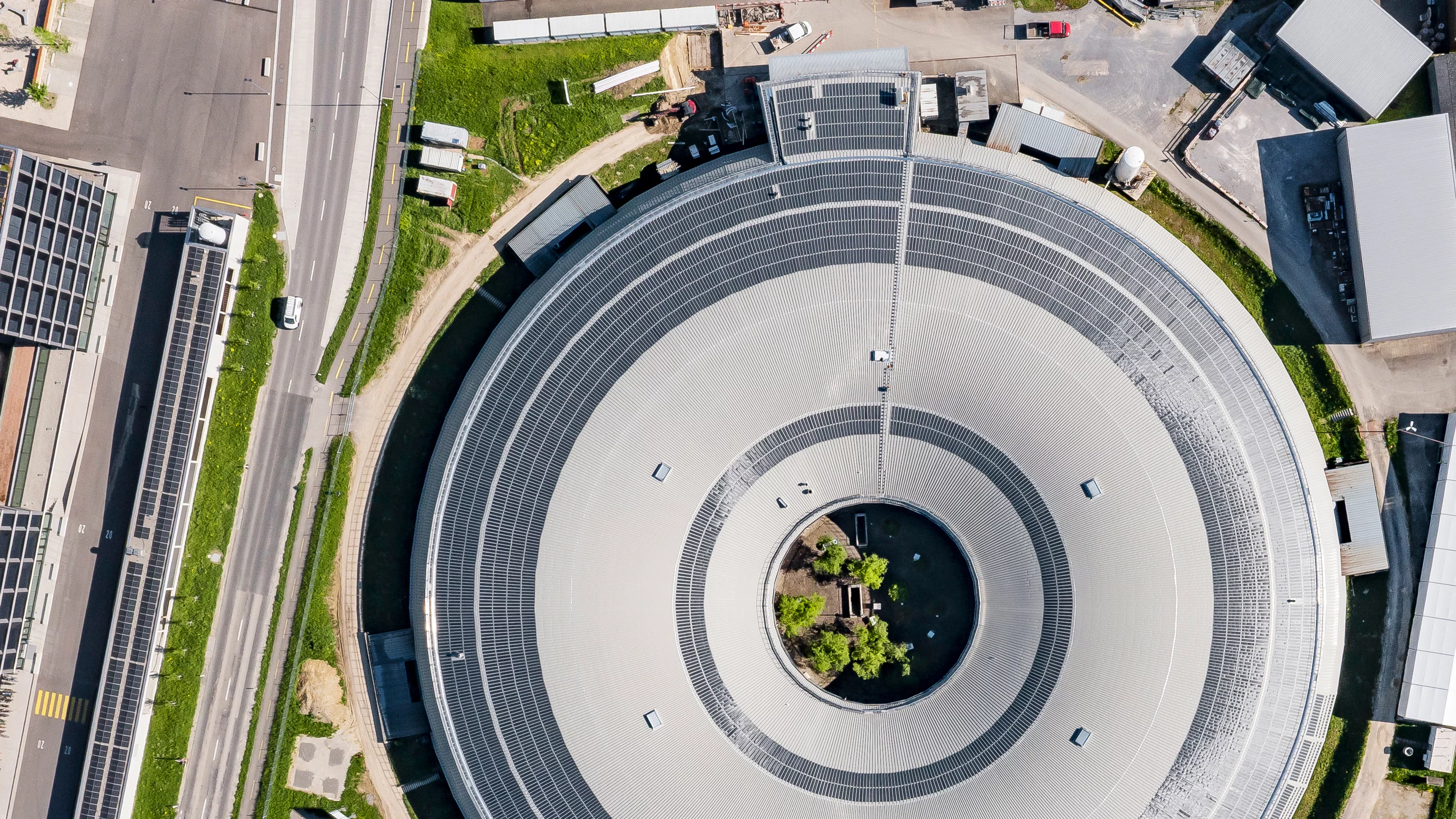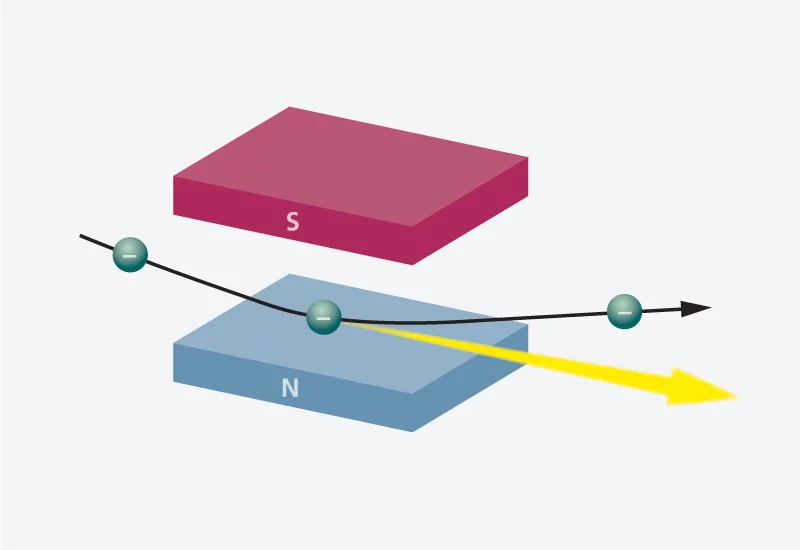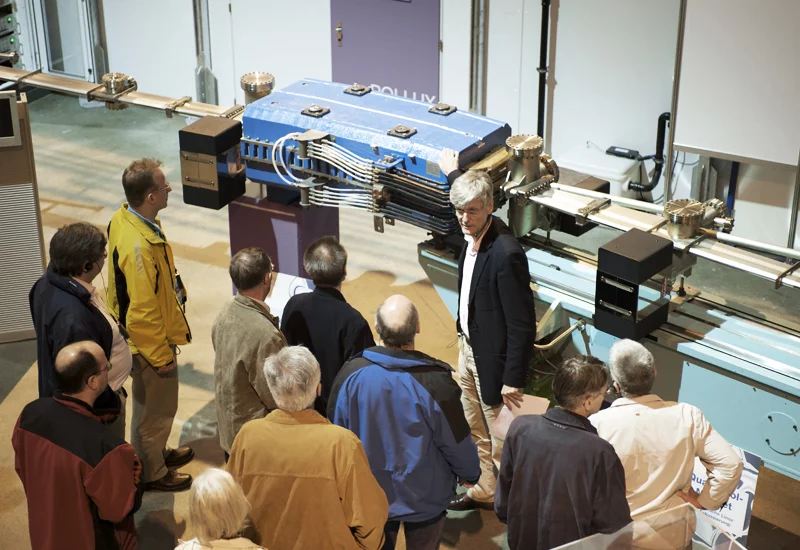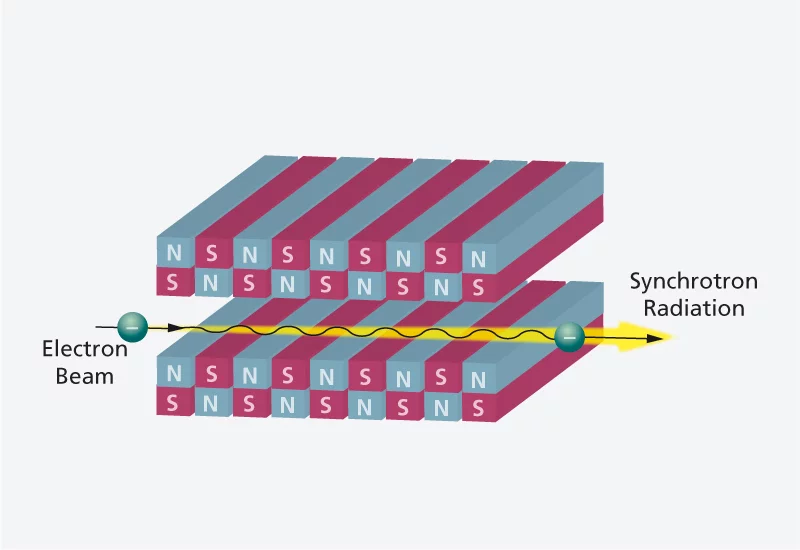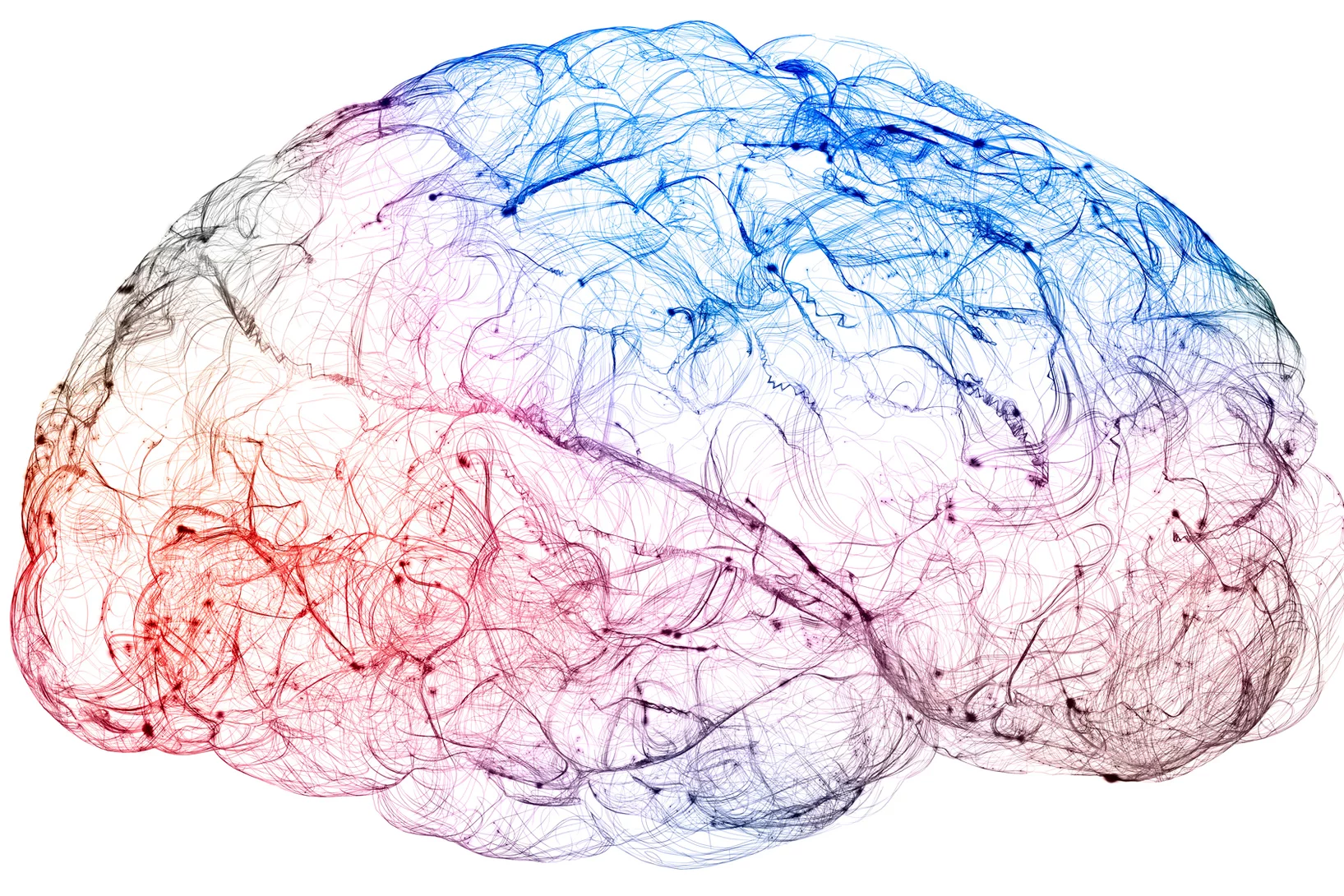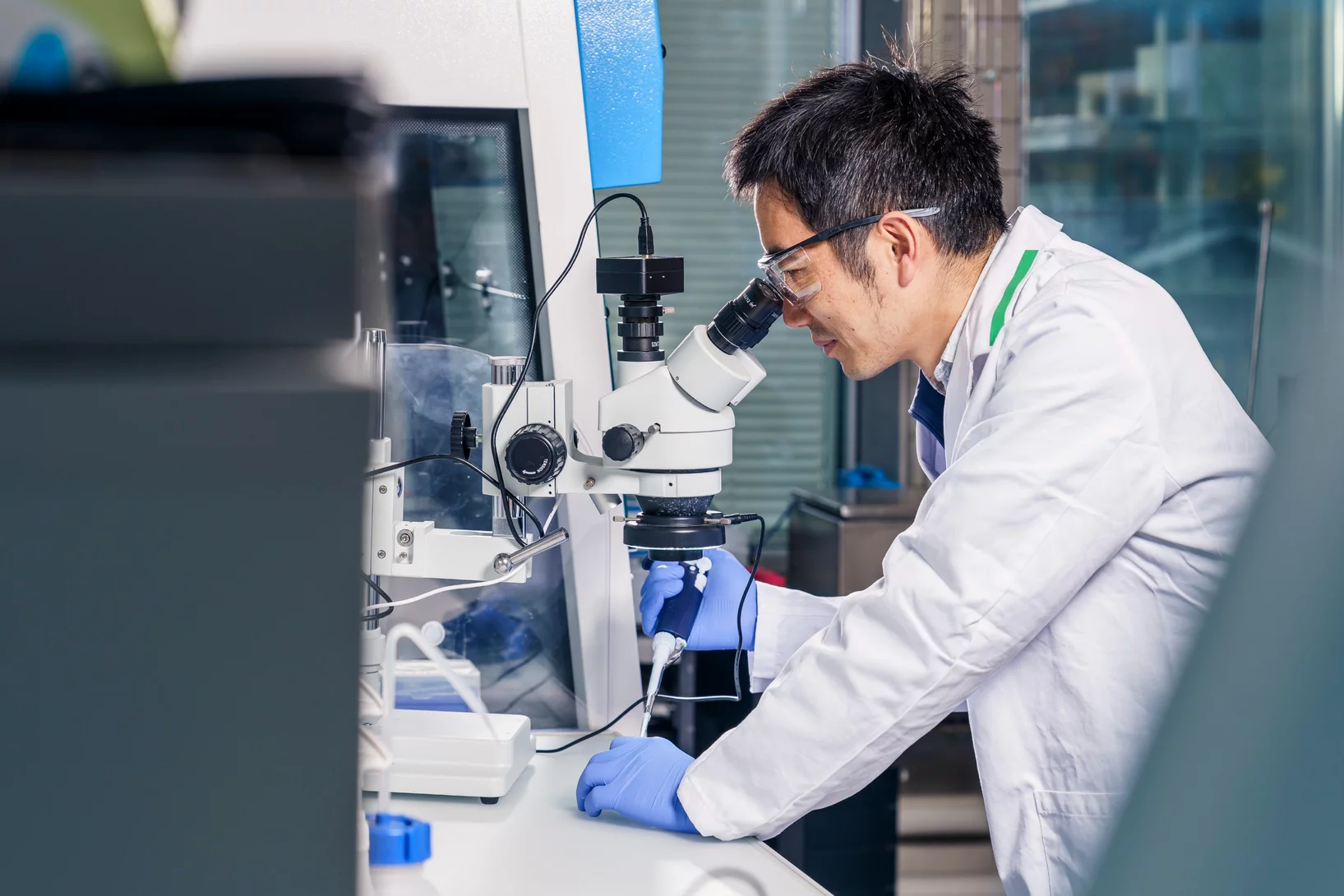Synchrotron light – emitted by electrons following a bent path
The Swiss Light Source SLS at PSI generates synchrotron light, which researchers use to investigate the properties of a wide variety of materials.
The synchrotron light in the SLS is emitted from electrons, which move at a velocity of almost the speed of light along a circular path with an overall circumference of 288 metres. The synchrotron light is emitted tangentially to the trajectory of the electrons, i.e. in the same direction as sparks would fly from a grindstone, or a hammer from the hands of a hammer thrower.
The production of synchrotron radiation makes use of the fact that electrically charged particles emit light as they move along a curved path. Bending magnets keep the electrons on their curved track, as a magnetic field deflects fast-moving electrically-charged particles.
Several accelerators get the electrons at a high velocity
A number of accelerators are used to speed up the electrons in stages to their final, high velocity. At the very beginning of the acceleration path is a linear accelerator, in which the electrons are generated and accelerated to a velocity at which they can be fed into the SLS synchrotron. In the synchrotron, the electrons are accelerated to their final velocity before being fed into an external storage ring. There, the electrons are not accelerated further, but are maintained at a constant velocity, generating synchrotron light in the process. This arrangement of an inner accelerator ring with an outer storage ring makes the use of a top-up
procedure possible.
The top-up mode: constant beam intensity for hours
One particular feature of the SLS is its use of the top-up mode, which ensures that the intensity of the electron beam within the storage ring (and thus the amount of synchrotron light available) stays essentially constant. In most synchrotron light sources, the electron beam is fed into the storage ring in one step only, and circulates there for about eight hours. Thus the beam becomes less intense with time, since electrons are lost and not replaced. This presents a particular difficulty to many investigators, because they have to set up their experiment at the beginning of beam time, and the beam will then already have lost some of its intensity by the time they are ready to start collecting data.
At the SLS, this problem is solved by the top-up procedure, in which new electrons are injected into the storage ring every four to five minutes to replace those that are lost, thus keeping the beam intensity essentially constant. This feature depends on the ability of the pre-accelerator (i.e. the synchrotron, from which the electrons are injected into the storage ring) to accelerate the particles to the velocity required for the storage ring.
SLS: Accelerator with the thinnest electron beam
The electron beam at the SLS is kept on its path by more than just the bending magnets. A total of 350 magnets repeatedly concentrate the beam, accelerator cavities re-accelerate it as it continually loses some velocity and its bundled character as it travels. Since 2008, the SLS accelerator has provided the narrowest beam of electrons available anywhere in the world – the end result of eight years' work by the researchers and engineers at PSI, adjusting the many magnets, one by one, over and over again. This success does not just benefit the users of the SLS itself – it also makes an important contribution to the ongoing development of accelerator technology.
3rd generation source: the right kind of synchrotron light for different requirements
Careful inspection would reveal that the shape of the electron path in the SLS is not a perfect circle; as there are straight portions between the bending magnets. These straight sections can also be used to generate synchrotron light if so-called wigglers
or undulators
are integrated in the ring – structures made up of many permanent magnets that force the electrons onto a wave-shaped path. These so-called insertion devices
can be used to produce synchrotron light that is precisely adjusted to suit the needs of each particular experiment – for example, those requiring very high energy or a particular direction of polarisation. The use of wigglers and undulators classifies the SLS as a third-generation synchrotron light source
Further information
- Research with synchrotron light: Research topics and methods
- 10th anniversary of Swiss Light Source SLS: Media Release Zehn Jahre Forschung in der fliegenden Untertasse (in German) (September 14 2011)
- The planned Upgrade: The SLS is set to undergo an upgrade in the coming years: SLS 2.0
News
X-rays bring high-resolution brain mapping within reach
A new imaging breakthrough could reveal brain connectivity in 3D detail never before accessible.
How the cheese-pasta principle could help counter Alzheimer's
PSI researchers have discovered cellular mechanisms that could help to mitigate diseases such as Alzheimer's and Parkinson's.
Big heart, acute senses key to explosive radiation of early fishes
X-rays of a 400-million-year-old fossil illuminate a key moment in our deep evolutionary past.

